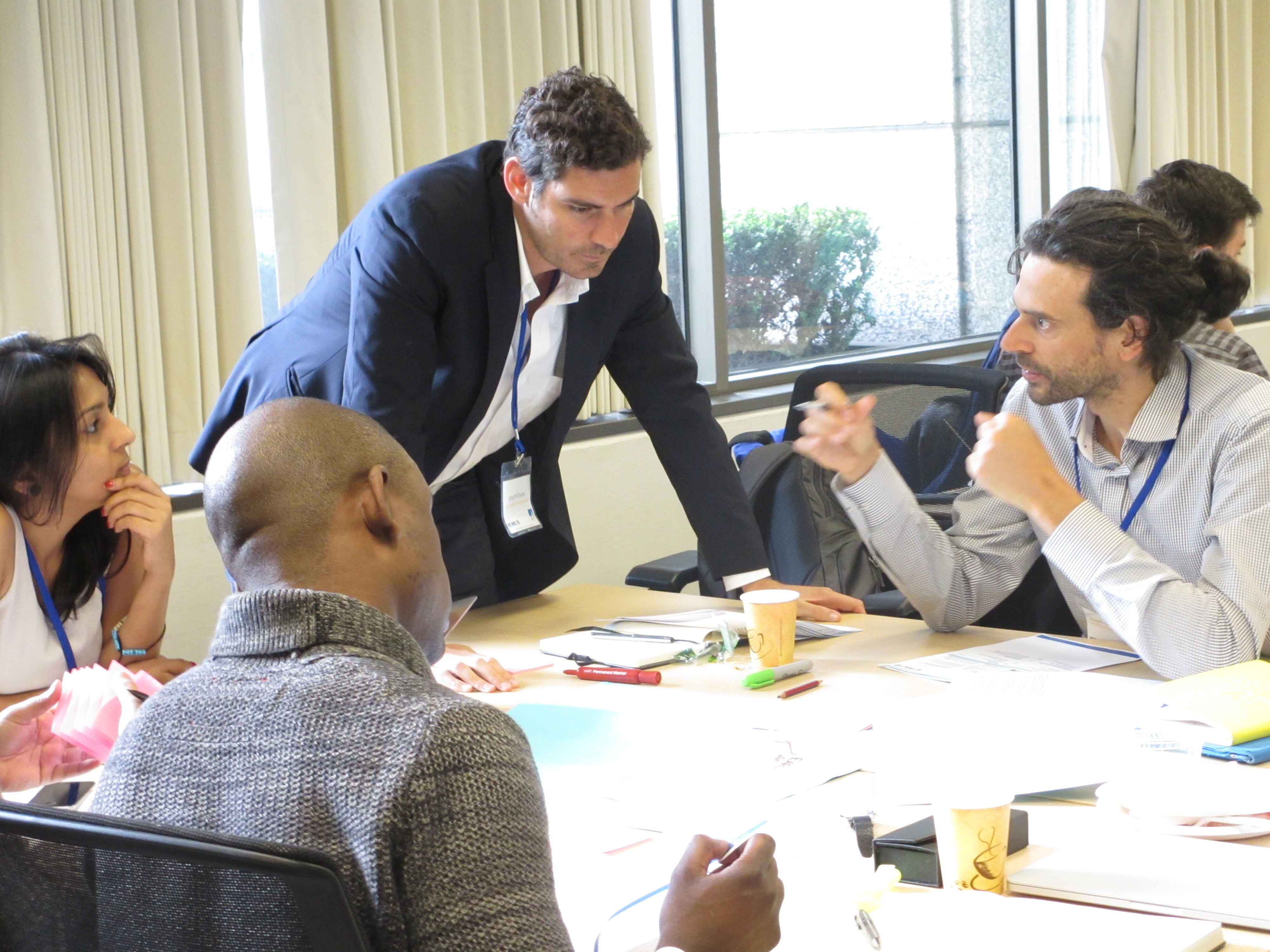Energy Ideation Lab Puts Skills to the Test

At a recent event in San Francisco, students enhanced their problem-solving and pitching skills, giving an energy company some fresh ideas in the process.
The PG&E headquarters in downtown San Francisco saw a unique addition to their usual employee traffic on a recent Friday. By 8:00am, nearly 60 students from universities all over northern and central California had conquered public transit or city commuting, picked up their name tag, chugged some coffee, and were anxious for Chris Benjamin, Director of Corporate Sustainability at PG&E, to kick off the 2014 Net Impact and PG&E Energy Ideation Lab. PG&E brought the students together to identify strategies to more effectively engage customers in reducing their energy use, and we were eager to see how the day would unfold.
A certain tension hung in the air as students awaited details on the day’s events. Beyond basic background covered in a pre-event webinar, they only knew they would be competing against other schools to create a solution for PG&E around their customer engagement strategy. So why did they show up? Students from UC Merced, UC Davis, UC Berkeley and more indicated that they simply wanted “to be part of a collaborative and innovative event.” And the Energy Ideation Lab more than delivered.
The beauty of human-centered design
For PG&E, helping customers make the transformation into active energy managers requires new, creative, and sustained solutions. Ideation Lab participants were asked to reach one of these solutions using design thinking methodology. Design thinking is a “deeply human” process that taps into abilities we inherently possess but are often overlooked by more conventional problem-solving practices. It relies on our ability to be intuitive and construct ideas that are emotionally meaningful as well as functional. (You can read more about design thinking on IDEO’s website.)
Corporations have been using this method for a long time to develop products such as Apple’s iPod and the Herman Miller Aeron Chair, and design thinking is now becoming more popular among social entrepreneurs. Six years ago, a team of students at Stanford University developed a simple, portable sort of sleeping bag for newborns that so far has helped 22,000 low-birth-weight babies around the world stay warm.
At the Energy Ideation Lab, student teams used design thinking to create an engagement strategy for one of PG&E’s customer segments. Their first task was to empathize with their customer in order to build a deep understanding of who they were designing for. By the close of this first step, teams were able to describe in detail their customer’s relationship with energy and why they might or might not take steps to reduce their energy use.
The students maintained this empathy throughout the rest of the design process and ultimately reached a solution with the customer at the very heart.
The allure of real problems
“Solving real-world problems” is a catch phrase in the academic space, incorporated into class descriptions and touted as the ultimate way to develop skills. The Ideation Lab was confirmation that students truly do want to apply their skills to real problems in order to create positive change.
Energy was palpable at the PG&E office the minute students received a packet containing their challenge and customer segments. Teams were in heated arguments about whether their grandparents would better respond to a magnet that doubled as an energy-tracker or a personal energy-update phone call every evening. No one had an ounce of doubt that students were fully invested in creating an innovative customer engagement strategy to present to PG&E judges at the end of the morning.
The students were eager to throw aside textbooks and exams and put their skills to the test through intense discussion and time-sensitive creativity. Nick, a Haas student graduating this spring, said, “My energy class at Berkeley was very applicable to event, and I was able to directly apply what I was already learning.” And Miguel, an undergrad from UC Merced, felt the event helped build his professional skills and was “a big stepping stone” for him as he enters the job market after graduation.
Not only were students energized about how their education can act as an asset to pressing challenges, but PG&E staff also was engaged in the process from start to finish. Design thinking was integrated into their customer engagement challenge seamlessly, and more than 20 staff members, including Steve Malnight, Vice President of Customer Energy Solutions, and Ezra Garrett, Vice President of Community Relations and Chief Sustainability Officer, enthusiastically participated as judges and speakers throughout the event. Conversations are flowing about how to build on the momentum of this event.
Here at Net Impact, we can’t wait (some might say we’re a bit overly enthusiastic) to create more offerings like this for our network. We're excited to launch the next iteration of these events with our pilot Impactathon with technology company SAP this summer. If you'll be in the Bay Area in June, now's the time to apply. You'll be sure to see us putting these principles in action in other ways, too, with more partnership events this fall and upcoming conference sessions highlighting design methodology.




